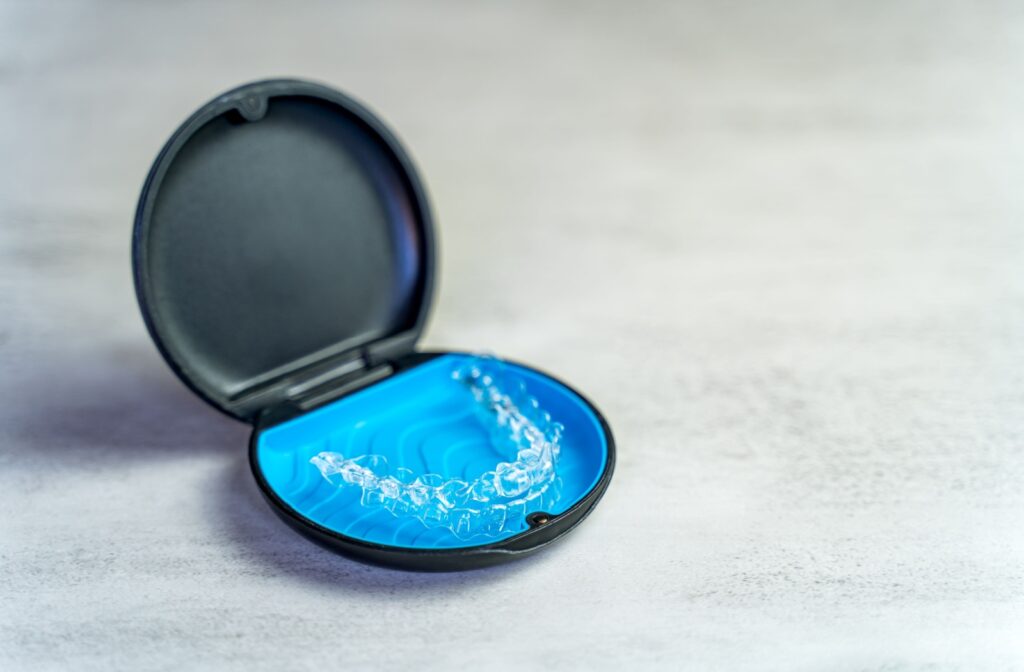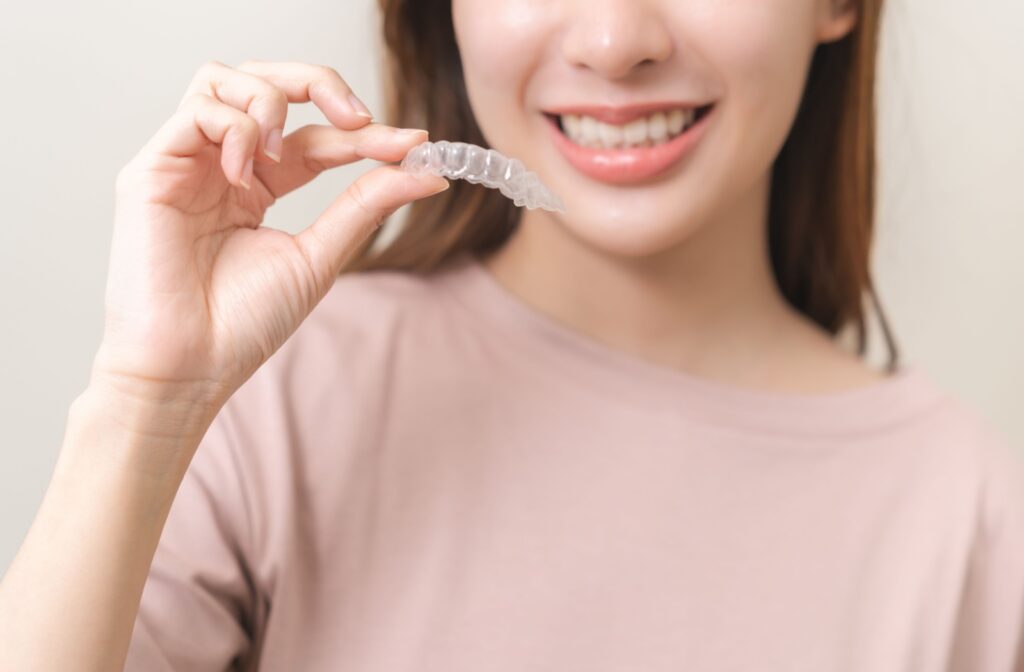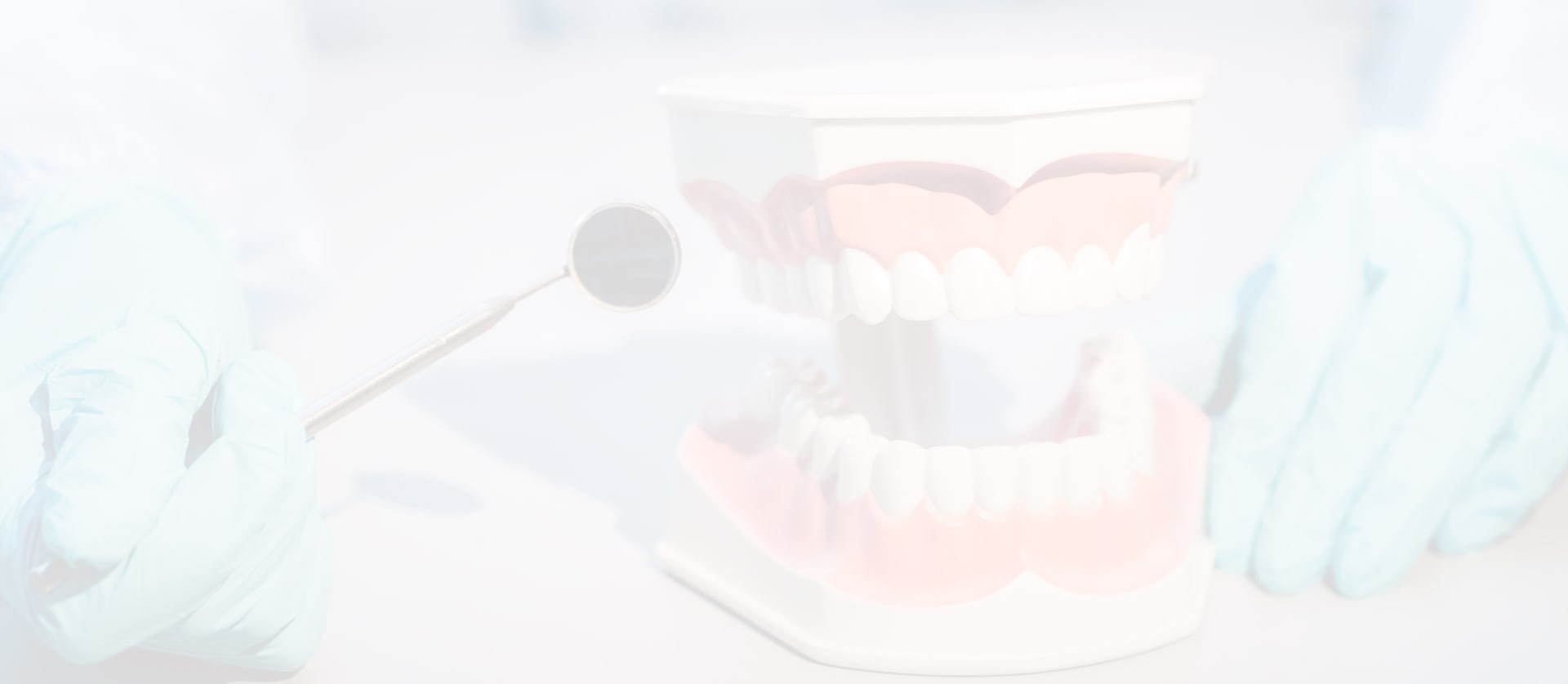When evaluating orthodontic options, many people turn to Invisalign® to fix misaligned teeth and improve their smile.
In most cases, yes, Invisalign® can effectively treat mild-to-moderate overbite issues by gradually repositioning the teeth and jaw with custom clear aligners. For more severe overbites, traditional braces or even surgical correction may be necessary, depending on the cause and complexity of the condition.
Understanding how Invisalign® works and whether it’s right for your specific needs is an important step in your orthodontic journey. Here’s what you need to know about how Invisalign® addresses overbites and what to expect from treatment.
What is Invisalign®?
Invisalign® is a modern, non-invasive orthodontic treatment that uses custom-made, clear aligners to gently reposition teeth into their ideal alignment. These aligners, made of transparent plastic, are designed to be subtle and nearly invisible, making them an appealing option for people who prefer to avoid the appearance of metal braces.
The process involves wearing a series of aligners over time, each set shifting the teeth slightly closer to their desired positions. Patients typically wear each aligner for about two weeks before moving on to the next one in the sequence, continuing this process until the treatment plan is complete.
One of Invisalign®’s greatest benefits is its removability. Unlike traditional braces, the aligners can be taken out for eating, brushing, and flossing, allowing patients to maintain their regular oral hygiene routines.
What Dental Issues Can Invisalign® Fix?
Beyond overbites, Invisalign® can be effective for treating a variety of dental misalignments and complications, including:
- Gapped teeth: Invisalign® can close abnormal spacing caused by jawbone growth or missing teeth.
- Crowded teeth: When there isn’t enough room in the jaw for all the teeth, Invisalign® can create space and promote alignment.
- Crossbite: This occurs when one or more upper teeth bite on the inside of the lower teeth. Invisalign® can help restore the proper bite.
- Underbite: Invisalign® can address situations where the lower teeth extend beyond the upper teeth.
- Open bite: For cases where the upper and lower teeth don’t meet properly when biting down, Invisalign® can help improve closure.
By addressing these issues, Invisalign® not only enhances the appearance of your smile but also improves oral health by reducing the risk of complications like gum disease, tooth decay, and jaw discomfort.
What is an Overbite?
An overbite, sometimes referred to as a “deep bite,” occurs when the upper front teeth overlap the lower front teeth. While a minor overbite is fairly common and not necessarily a cause for concern, a pronounced overbite can lead to issues such as:
- Tooth damage caused by excessive wear.
- Chewing and biting difficulties due to improper alignment.
- Speech disturbances, including difficulty articulating certain sounds.
- Higher risk of injury to the upper front teeth.
Overbites are often hereditary but can also develop due to prolonged thumb-sucking or excessive pacifier use in childhood. Addressing an overbite can be important for improving oral function and overall dental health.
How Does Invisalign® Treat Overbite?
For patients with mild-to-moderate overbite, Invisalign® is often an effective treatment option. The aligners are custom-designed to gradually shift both the teeth and jaw into correct alignment. Over time, the process helps resolve the overbite and restores balance to the bite.
Here’s how Invisalign® works to fix an overbite:
- Customized Treatment Plan: Your dentist will begin by designing a plan specific to your needs. Digital scanning technology will map the current position of your teeth and show a simulation of the expected results.
- Gradual Correction: The aligners will apply gentle, constant pressure to your teeth, encouraging the upper and lower jaws to align correctly.
- Treatment Monitoring: Regular check-ins with your dentist will ensure the treatment is progressing as planned and adjustments can be made when needed.
For more severe overbites, additional treatments like braces or jaw surgery may be necessary. Your dentist will recommend the best option based on the degree of misalignment and other factors.

What to Expect With Invisalign®?
Choosing Invisalign® is a straightforward process, but understanding the steps involved will help set realistic expectations. Here’s a breakdown of the typical treatment experience:
Initial Consultation
The process begins with a consultation, where your dentist will assess your dental health and determine whether Invisalign® is the right fit for your needs. They’ll discuss the treatment timeline and expected outcomes.
Digital Impressions
Instead of messy molds, your dentist will use digital scanning tools to capture a precise image of your teeth. This data is used to design your custom aligners.
Wearing the Aligners
You’ll wear each aligner for approximately two weeks before switching to the next set. For optimal results, the aligners should be worn for at least 22 hours per day, only removing them for meals and oral hygiene.
Routine Follow-Up
You’ll visit your dentist periodically to ensure your treatment is progressing as planned. These check-ins allow adjustments to be made if necessary.
Final Results
Once the treatment is complete, your overbite will be corrected, and your teeth will be beautifully aligned. Your dentist will recommend wearing retainers to maintain your results.
Tips for Invisalign® Success
A successful Invisalign® treatment requires commitment and consistency. Here are some tips to ensure the best possible results:
- Wear your aligners as directed: Aim for at least 22 hours of daily wear to maintain constant pressure on your teeth.
- Practice good oral hygiene: Brush and floss regularly to keep your teeth and gums healthy. Clean your aligners daily as well.
- Attend follow-up appointments: Regular check-ins with your dentist allow progress to be monitored and adjustments to be made as needed.
- Be patient: Orthodontic treatments take time. Stay consistent, and don’t get discouraged if results aren’t instantly noticeable.
Is Invisalign® Right for You
If you’re wondering whether Invisalign® is the right solution for your overbite or other dental concerns, the best way to find out is through a consultation with your dentist. They can assess your individual situation and recommend a treatment plan tailored to your needs. At Fairlawn Dental Centre, we’re here to help you achieve a confident, healthy smile. Book your consultation with us today and take the first step toward transforming your smile with Invisalign®.










